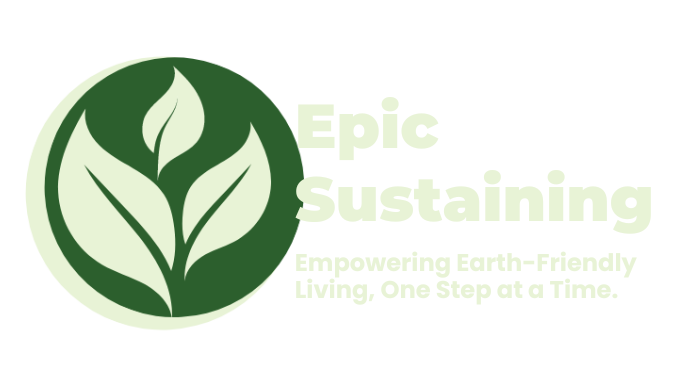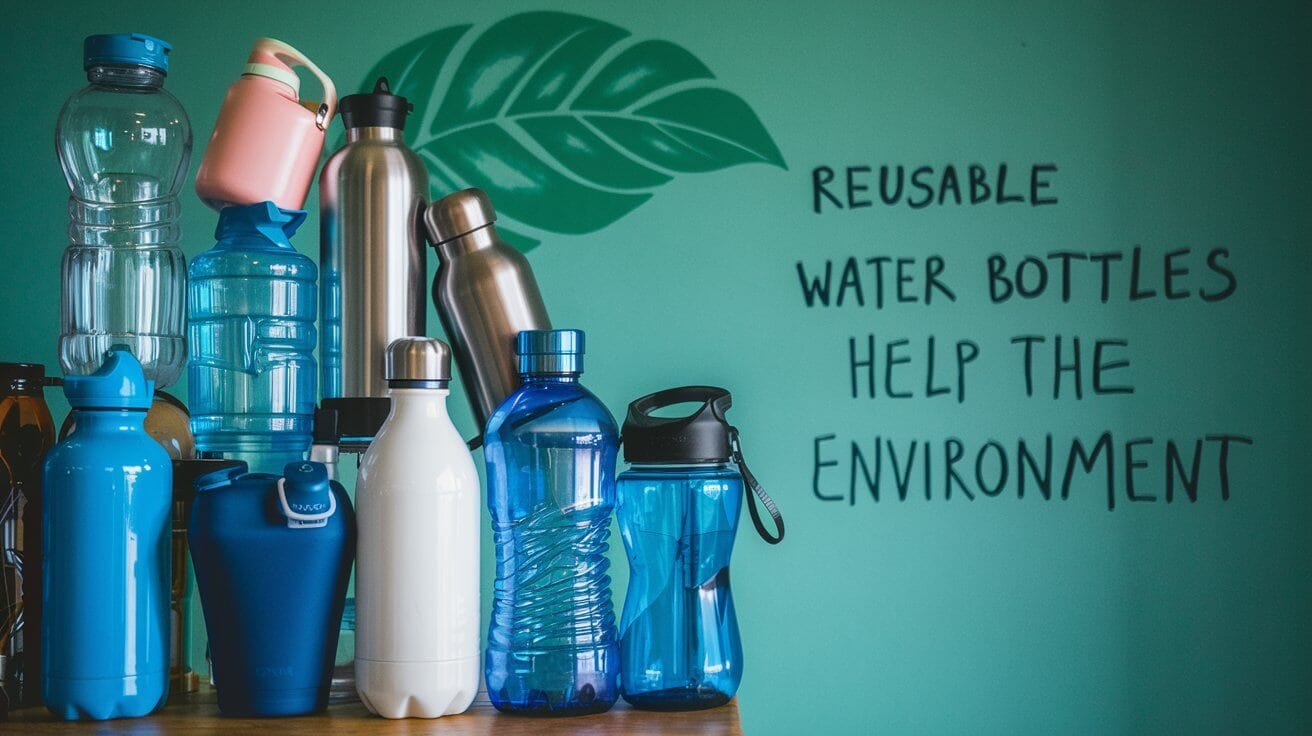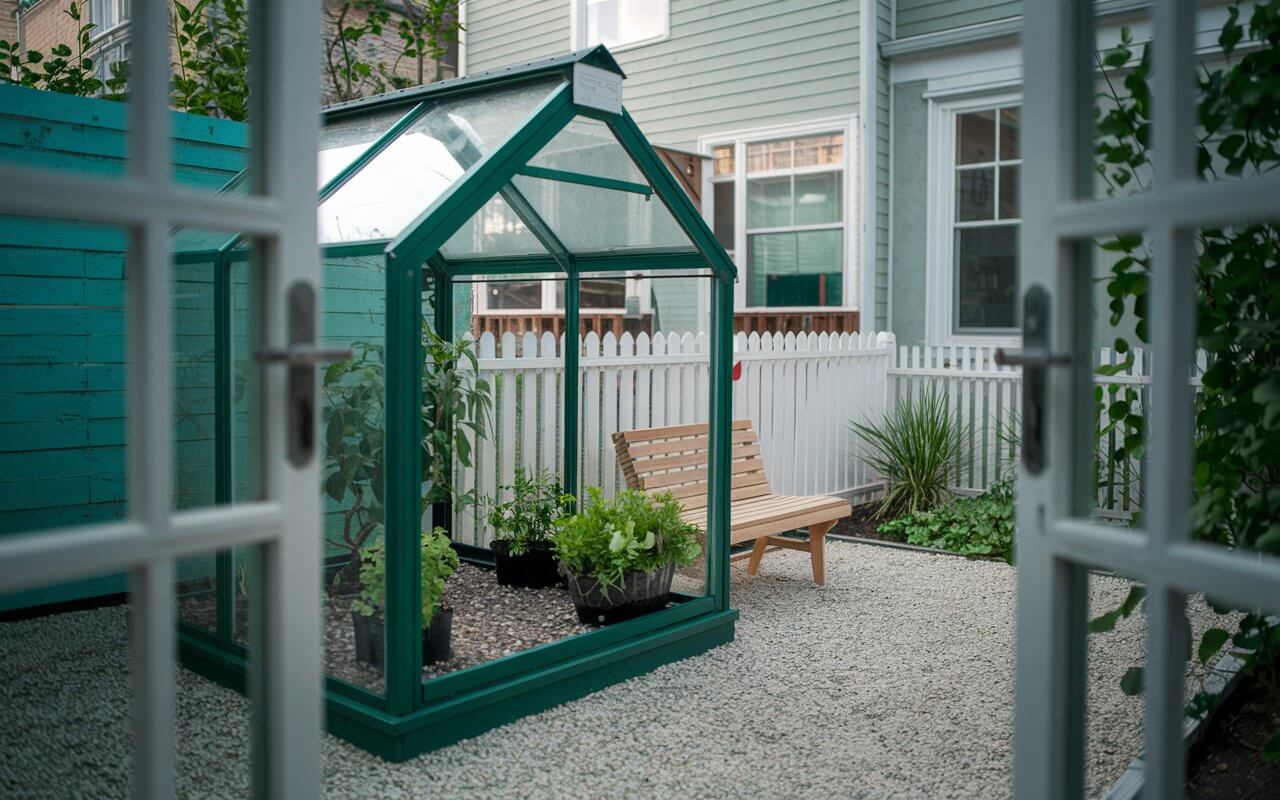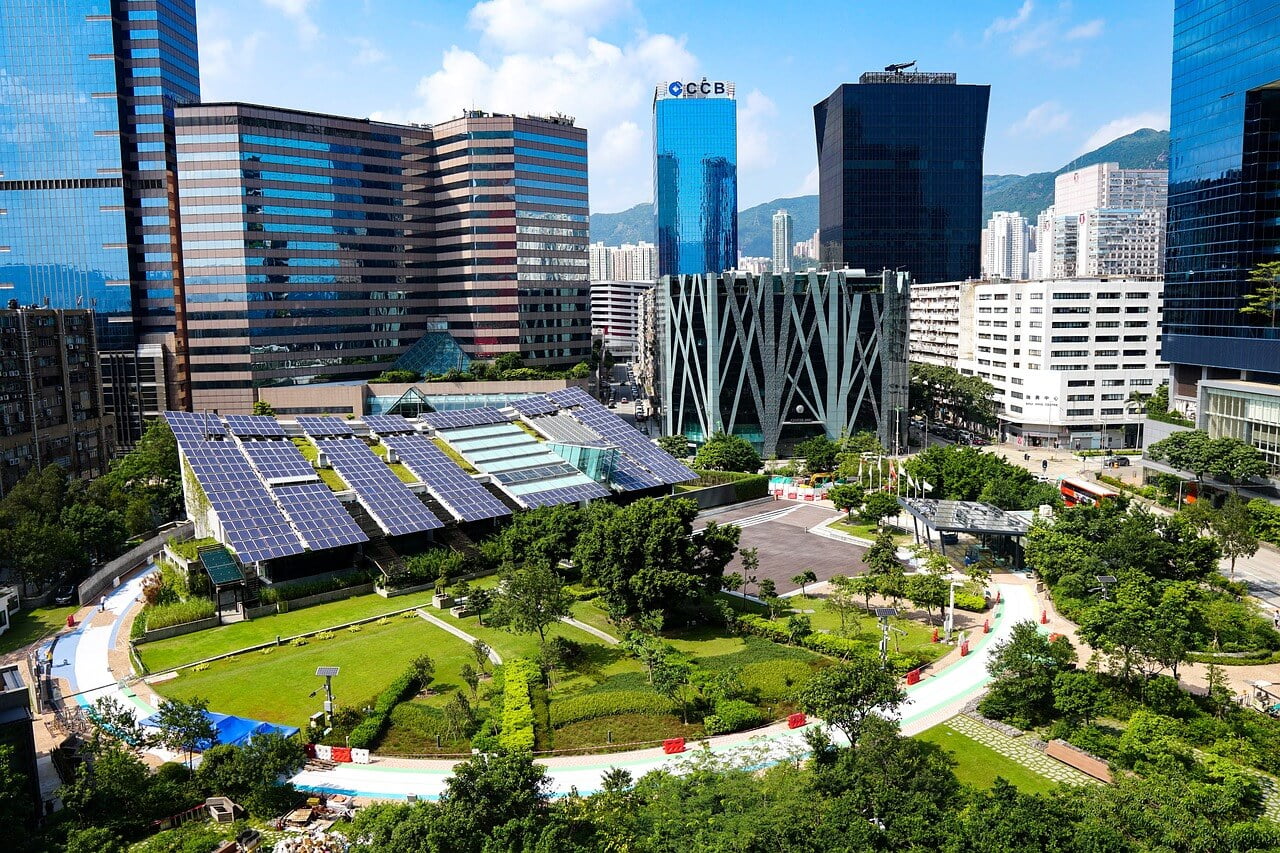Ready to uncover the truth about sustainable living myths?
Prepare to be surprised as we debunk common sustainability misconceptions that might be holding you back.
Don’t let misinformation derail your sustainability journey, in this comprehensive guide, we’ll tackle 27 common myths about sustainable living head-on.
By the end of this article, you’ll be equipped with the knowledge to make informed decisions about your lifestyle and its impact on the planet.
Key Takeaways:
- Sustainable Living Myths: Explore and debunk 27 common misconceptions.
- Sustainable living isn’t always expensive, many eco-friendly practices can save you money.
- Small individual actions can collectively make a significant environmental impact.
- Eco-friendly products have greatly improved in quality and performance over the years.
- Sustainable living is for everyone, regardless of age, education, or lifestyle.
- Renewable Energy Reliability: Learn how renewables are becoming more affordable and reliable.
- Modern Comforts and Sustainability: Discover how sustainable living enhances, not diminishes, modern life.
- Recycling Limitations: Recognize the importance of reducing and reusing over recycling.
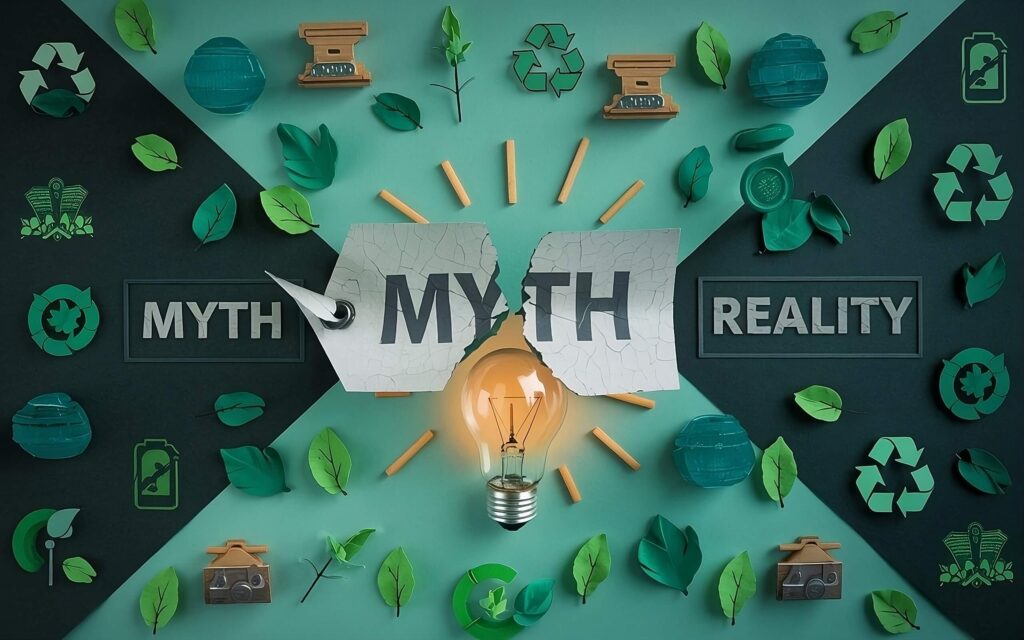
Page Contents
ToggleWhy Debunking Sustainable Living Myths Matters?
Misinformation can be a significant barrier to adopting eco-friendly practices.
A study by the Yale Program on Climate Change Communication found that while 72% of Americans think global warming is happening, many underestimate how many of their fellow citizens share this belief.
This perception gap can lead to inaction and perpetuate myths about sustainable living.
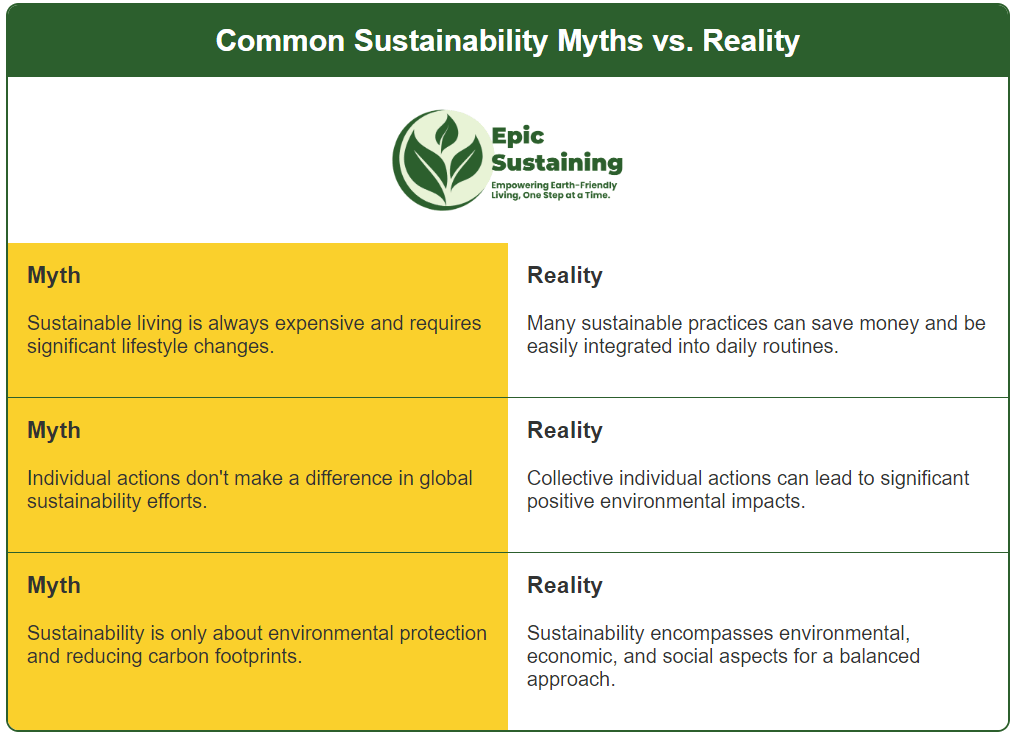
Myth 1: Sustainable Living is Always Expensive
The Myth Explained
One of the most pervasive myths about sustainable living is that it’s a luxury only the wealthy can afford.
Many people believe that eco-friendly products, organic food, and green energy solutions come with hefty price tags that are out of reach for the average consumer.
The Reality
While some sustainable products may have higher upfront costs, the long-term savings and benefits often outweigh the initial investment.
Moreover, many sustainable practices actually save money by reducing consumption and waste.
Cost Comparison: Traditional vs. Sustainable
| Item | Traditional | Sustainable | Long-term Savings |
| Light Bulbs | Incandescent: $1 each | LED: $5 each | $30-$80 per bulb over its lifetime |
| Water Bottle | Disposable: $1 each | Reusable: $20 | $156 per year (based on 1 bottle/day) |
| Cleaning Products | $40/month | DIY solutions: $10/month | $360 per year |
Actionable Tips
- Reduce Energy Consumption:
- Use a programmable thermostat to optimize heating and cooling.
- Unplug electronics when not in use to avoid phantom energy drain.
- Embrace Second-Hand:
- Shop at thrift stores for clothing and household items.
- Use platforms like FreeCycle or Buy Nothing groups for free items.
- DIY Cleaning Products:
- Make your own all-purpose cleaner with vinegar and water.
- Use baking soda as a natural abrasive for tough cleaning jobs.
- Start Composting:
- Reduce waste and create free fertilizer for your garden.
- Use a simple bin or tumbler system for easy composting.
- Conserve Water:
- Install low-flow showerheads and faucet aerators.
- Collect rainwater for watering plants.
By adopting these simple, cost-effective strategies, you can join the growing number of people making a positive change without breaking the bank.
It’s not about buying expensive eco-labeled products, but rather about reducing consumption, reusing what you have, and making thoughtful decisions about what you buy.
Myth 2: Renewable Energy is Unreliable and Expensive
The Myth Explained
A common misconception is that renewable energy sources like solar and wind are unreliable due to their dependence on weather conditions.
Additionally, many believe that transitioning to renewable energy is prohibitively expensive for both individuals and nations.
The Reality
Advances in technology have made renewable energy increasingly reliable and cost-effective.
In fact, renewables are becoming cheaper than traditional fossil fuels in many parts of the world.
Cost Trends in Renewable Energy
According to the International Renewable Energy Agency (IRENA), the global weighted-average levelized cost of electricity (LCOE) from new solar photovoltaics and onshore wind projects has fallen dramatically:
| Energy Source | Cost Reduction (2010-2020) |
| Solar PV | 85% |
| Onshore Wind | 56% |
| Offshore Wind | 48% |
Reliability Improvements
- Grid Integration: Smart grids and improved energy storage solutions are addressing intermittency issues.
- Diverse Energy Mix: Combining different renewable sources (solar, wind, hydro, geothermal) increases overall reliability.
- Forecasting Technology: Advanced weather prediction models help optimize renewable energy production.
Actionable Tips
- Install Solar Panels:
- Consider a home solar system; many areas offer incentives and tax breaks.
- Look into community solar projects if individual installation isn’t feasible.
- Choose Green Energy Providers:
- Switch to utility companies that offer renewable energy options.
- Many providers now offer 100% renewable plans at competitive rates.
- Invest in Energy-Efficient Appliances:
- Look for ENERGY STAR-certified products to reduce overall energy consumption.
- Consider smart home devices to optimize energy use.
- Support Renewable Energy Policies:
- Stay informed about local and national renewable energy initiatives.
- Advocate for policies that promote clean energy adoption.
- Portable Solar Chargers:
- Use small solar chargers for devices like phones and tablets.
- Great for outdoor activities and reducing reliance on grid electricity.
The transition to clean energy is not just an environmental imperative, but an economic opportunity that’s becoming more accessible every day.
Myth 3: Sustainable Living Requires Giving Up Modern Comforts
The Myth Explained
Many people believe that embracing a sustainable lifestyle means sacrificing the conveniences and comforts of modern life.
This myth often portrays eco-friendly living as austere, inconvenient, and incompatible with technology and luxury.
The Reality
Sustainable living doesn’t mean reverting to a primitive lifestyle.
In fact, many eco-friendly innovations enhance our quality of life while reducing environmental impact.
The key is to make smarter choices about the products we use and how we use them.
Actionable Tips
- Upgrade to Smart Home Devices:
- Install a smart thermostat to optimize heating and cooling.
- Use smart power strips to eliminate standby power consumption.
- Choose Energy-Efficient Electronics:
- Look for ENERGY STAR certification when purchasing new devices.
- Opt for laptops over desktop computers, as they typically use 80% less electricity.
- Embrace Sustainable Transportation:
- Consider an electric or hybrid vehicle for your next car purchase.
- Use bike-sharing or electric scooter services for short urban trips.
- Opt for Eco-Friendly Personal Care:
- Switch to bamboo toothbrushes and recyclable razors.
- Choose shampoo bars and solid soaps to reduce plastic packaging.
- Explore Sustainable Home Decor:
- Use LED light bulbs in stylish fixtures for energy-efficient lighting.
- Choose furniture made from sustainable materials like bamboo or reclaimed wood.
Remember, sustainable living is about making conscious choices, not sacrificing quality of life.
Myth 4: Recycling is the Ultimate Solution to Waste Management
The Myth Explained
Many people believe that as long as they recycle diligently, they’re solving the waste problem.
This myth often leads to overconsumption and a false sense of environmental responsibility, with recycling seen as a catch-all solution for waste management.
The Reality
While recycling is an important part of waste management, it’s not a panacea.
The reality is that a significant portion of what we put in recycling bins doesn’t actually get recycled.
According to the Environmental Protection Agency (EPA), only about 32% of waste in the U.S. is recycled or composted.
The Waste Management Hierarchy
The EPA promotes a waste management hierarchy that prioritizes actions:
- Source Reduction and Reuse
- Recycling and Composting
- Energy Recovery
- Treatment and Disposal
Recycling is just one part of this comprehensive approach to waste management.
Actionable Tips
- Reduce and Reuse First:
- Choose products with minimal packaging.
- Opt for reusable items over disposables (e.g., water bottles, shopping bags).
- Compost Organic Waste:
- Start a home composting system for food scraps and yard waste.
- Look for community composting programs if home composting isn’t feasible.
- Practice Proper Recycling:
- Learn your local recycling guidelines to avoid contamination.
- Clean and dry recyclables before placing them in bins.
- Embrace Zero-Waste Principles:
- Shop at bulk stores with reusable containers.
- Repair items instead of replacing them when possible.
- Support Circular Economy Initiatives:
- Choose products from companies that take back and recycle their own products.
- Participate in clothing swap events or use clothing rental services.
The Power of Reduction
A study by the Ellen MacArthur Foundation found that applying circular economy principles could reduce annual plastic waste entering our oceans by 80% by 2040.
The most effective way to reduce waste is to not create it in the first place.
Myth 5: Organic Farming Always Results in Lower Crop Yields
The Myth Explained
Many people believe that organic farming methods inevitably lead to lower crop yields compared to conventional farming techniques.
This misconception often stems from the idea that without synthetic pesticides and fertilizers, crops are more vulnerable to pests and diseases, resulting in reduced productivity.
The Reality
Contrary to popular belief, modern organic farming practices can achieve yields comparable to conventional methods while being more sustainable and environmentally friendly.
Research has shown that organic farming can be highly productive, especially in the long term.
According to a study published in the journal Nature Plants, organic farming can achieve yields up to 70-100% of conventional agriculture, depending on the crop type and growing conditions.
The study analyzed 30 years of data from field experiments comparing organic and conventional farming methods.
Key findings:
- Organic yields were only 19% lower on average than conventional yields.
- For some crops, like beans, peas, and lentils, organic yields were nearly identical to conventional yields.
- Over time, the yield gap between organic and conventional farming tends to decrease as soil health improves.
Actionable Tips
- Support sustainable agriculture by choosing organic products at the grocery store:
- Look for USDA Organic certification labels.
- Shop at local farmers’ markets to find fresh, organic produce.
- Join a Community Supported Agriculture (CSA) program for regular organic vegetable deliveries.
- Grow your own organic garden:
- Start with easy-to-grow vegetables like tomatoes, lettuce, and herbs.
- Use companion planting techniques to naturally deter pests.
- Make your own compost to enrich soil fertility.
- Educate yourself about sustainable farming practices:
- Attend workshops or webinars on organic farming techniques
- Read books or articles from reputable sources on sustainable agriculture
- Follow organic farming organizations on social media for the latest news and tips
By understanding the truth about organic farming yields and supporting sustainable agricultural practices, we can contribute to a more environmentally friendly and productive food system.
Myth 6: Going Green is an All-or-Nothing Approach
The Myth Explained
A common misconception about sustainable living is that it requires a complete overhaul of one’s lifestyle.
Many people believe that to make a difference, they must immediately adopt every eco-friendly practice available, leading to the notion that going green is an all-or-nothing endeavor.
The Reality
The truth is that sustainable living is a journey, not a destination.
Small, incremental changes in green living can add up to significant benefits over time. Every eco-friendly choice, no matter how small, contributes to a more sustainable future.
Actionable Tips
- Start small: swap out single-use plastic for better alternatives
- Replace plastic water bottles with reusable ones made from glass or stainless steel.
- Use cloth bags for grocery shopping instead of plastic bags.
- Switch to bamboo toothbrushes and compostable dental floss.
- Gradually incorporate energy-saving habits:
- Turn off lights when leaving a room.
- Unplug electronics when not in use.
- Use a programmable thermostat to optimize heating and cooling.
- Adopt a “reduce, reuse, recycle” mindset:
- Before buying something new, consider if you can repurpose an item you already own.
- Donate or sell items you no longer need instead of throwing them away.
- Learn about proper recycling practices in your area and follow them consistently.
- Make sustainable food choices:
- Start with one meatless meal per week and gradually increase.
- Choose locally sourced produce when possible.
- Reduce food waste by meal planning and composting.
Remember, every step towards sustainability counts.
Myth 7: Eco-Friendly Homes are Unattractive and Uncomfortable
The Myth Explained
A persistent myth in sustainable living is that eco-friendly homes are aesthetically unappealing and uncomfortable to live in.
This misconception often stems from early examples of sustainable architecture that prioritized function over form, leading to the belief that green homes are boxy, utilitarian, and lack modern comforts.
The Reality
Contemporary sustainable homes can be both energy-efficient and stylish, proving that eco-friendly living doesn’t mean sacrificing design or comfort.
In fact, many eco-friendly homes are at the forefront of innovative architecture and interior design.
Actionable Tips
- Incorporate sustainable materials into your home design:
- Use reclaimed wood for flooring or accent walls.
- Choose low-VOC paints and finishes for a healthier indoor environment.
- Opt for recycled glass countertops or recycled plastic tiles for a unique look.
- Maximize natural light and ventilation:
- Install large, energy-efficient windows to reduce the need for artificial lighting.
- Use skylights or solar tubes to bring natural light into darker areas.
- Implement cross-ventilation strategies to improve air circulation and reduce cooling needs.
- Blend technology with eco-friendly design:
- Install smart thermostats to optimize energy use.
- Use LED lighting fixtures that combine energy efficiency with modern design.
- Consider solar panels that integrate seamlessly with your roof design.
- Create a green outdoor living space:
- Design a rain garden to manage stormwater runoff.
- Use native plants in landscaping to reduce water consumption and attract local wildlife.
- Install a green roof or living wall to improve insulation and create a striking visual feature.
- Choose eco-friendly furniture and decor:
- Select furniture made from sustainable materials like bamboo or certified sustainable wood.
- Use organic textiles for curtains, rugs, and upholstery.
- Decorate with plants to improve air quality and add natural beauty.
- Implement water-saving features:
- Install low-flow fixtures that combine water efficiency with sleek design.
- Consider a greywater system for watering gardens.
- Use rainwater harvesting systems that can be integrated into the home’s architecture.
By implementing these strategies, you can create a home that is not only environmentally friendly but also beautiful and comfortable.
Myth 8: Carbon Offsetting is a Shortcut to Tackling Global Warming
The Myth Explained
Many people believe that purchasing carbon offsets is a quick and easy solution to neutralize their impact on climate change.
This misconception often leads to the idea that one can continue high-emission activities guilt-free as long as they buy enough carbon offsets.
The Reality
While carbon offsetting can play a role in mitigating climate change, it’s not a silver bullet solution.
It’s more important to prioritize reducing emissions through energy-efficient and sustainable practices in daily life.
Carbon offsetting should be seen as a complementary strategy, not a substitute for reducing one’s carbon footprint.
According to a study published in Frontiers in Climate, while carbon offsetting can have positive impacts, it’s crucial to focus on emissions reductions first.
The study emphasizes the need for a hierarchical approach to addressing climate change:
- Avoid emissions where possible.
- Reduce unavoidable emissions.
- Offset residual emissions.
Key findings:
- Carbon offsetting projects vary widely in their effectiveness and permanence.
- The most effective offsetting projects often provide co-benefits like biodiversity conservation or community development.
- There’s a risk of “rebound effects” where offsetting may lead to increased emissions if not carefully managed.
Actionable Tips
- Prioritize emissions reduction:
- Improve home energy efficiency through insulation and energy-efficient appliances.
- Use public transportation, carpool, or switch to an electric vehicle.
- Reduce meat consumption and opt for plant-based meals more often.
- Choose high-quality carbon offset projects:
- Look for offsets certified by reputable organizations like Gold Standard or Verified Carbon Standard.
- Prioritize projects with additional environmental or social benefits.
- Consider local offsetting projects where you can see the impact firsthand.
- Balance carbon offsetting with lifestyle changes:
- Calculate your carbon footprint using tools like the EPA’s Carbon Footprint Calculator.
- Set personal emissions reduction goals before considering offsets.
- Use offsetting for unavoidable emissions, such as necessary air travel.
- Support systemic changes:
- Advocate for renewable energy policies in your community.
- Support businesses with strong sustainability practices.
- Educate others about the importance of emissions reduction alongside offsetting.
Remember, while carbon offsetting can be a part of your sustainability strategy, it’s not a replacement for reducing your overall environmental impact.
Myth 9: Plastic is the Problem
The Myth Explained
There’s a common misconception that all sustainability issues stem from plastic use.
This oversimplification often leads people to believe that by simply eliminating plastic from their lives, they’ve solved the sustainability puzzle.
The Reality
While plastic pollution is indeed a significant environmental concern, sustainable living encompasses a much broader range of issues.
Energy use, food waste, water conservation, and greenhouse gas emissions are all critical aspects of sustainability that require attention alongside plastic reduction.
According to a comprehensive study published in Science, plastic waste is just one of many human impacts on the environment. The study highlights that while addressing plastic pollution is crucial, it’s part of a larger picture of environmental challenges.
Actionable Tips
- Reduce plastic use while addressing other sustainability issues:
- Use reusable bags, bottles, and containers to minimize plastic waste.
- Also, focus on reducing energy consumption by using energy-efficient appliances and LED lighting.
- Conserve water by fixing leaks and using water-saving fixtures.
- Adopt a zero-waste mindset beyond just plastic:
- Compost food scraps to reduce organic waste in landfills.
- Repair and repurpose items instead of throwing them away.
- Choose products with minimal packaging, regardless of the material.
- Address food sustainability:
- Reduce food waste by meal planning and proper food storage.
- Choose locally sourced and seasonal foods to reduce transportation emissions.
- Consider a plant-based diet or reducing meat consumption to lower your carbon footprint.
- Focus on energy conservation:
- Use renewable energy sources like solar or wind power.
- Improve home insulation to reduce heating and cooling needs.
- Unplug electronics and appliances when not in use to avoid phantom energy consumption.
Remember, while reducing plastic use is important, true sustainability requires a holistic approach.
Myth 10: Local Food is Always Better for the Environment
The Myth Explained
Many eco-conscious consumers believe that buying local food is always the most environmentally friendly choice.
The Reality
While local food can often be a sustainable choice, it’s not always the case.
The environmental impact of food depends more on how it’s produced rather than where it’s grown. Here’s why:
- Seasonal considerations: Out-of-season local produce grown in heated greenhouses can have a higher carbon footprint than produce imported from regions where it’s in season.
- Efficiency of transportation: Large-scale transportation can sometimes be more efficient. For example, shipping a ton of produce by boat can emit fewer greenhouse gases per unit than multiple small-scale local deliveries.
Actionable Tips
To shop more sustainably, consider these strategies:
- Prioritize plant-based foods: According to the UN’s Food and Agriculture Organization, livestock is responsible for about 14.5% of global greenhouse gas emissions.
- Choose seasonal produce: Seasonal fruits and vegetables are often more environmentally friendly, whether local or not.
- Look for eco-certifications: Labels like USDA Organic or Rainforest Alliance can indicate more sustainable farming practices.
- Support regenerative agriculture: Look for products from farms practicing regenerative agriculture, which helps sequester carbon in the soil.
Small, consistent changes in your shopping habits can add up to significant environmental benefits over time.
Myth 11: Sustainable Living is Only Possible in Rural Areas
The Myth Explained
There’s a common misconception that sustainable living requires acres of land, self-sufficiency, and a complete disconnect from urban amenities.
This leads many city dwellers to believe that their environmental impact can’t be significantly reduced.
The Reality
Urban areas can be hotbeds of sustainability innovation.
In fact, cities often provide unique opportunities for eco-friendly living:
- Efficient infrastructure: Urban density allows for more efficient use of resources.
- Public transportation: Cities typically offer robust public transit systems, reducing the need for personal vehicles.
- Sharing economy: Urban areas often have thriving sharing economies for everything from cars to tools, reducing individual consumption.
- Green building initiatives: Many cities are leading the way in green building practices. For instance, New York City’s Green New Deal aims to reduce the city’s carbon emissions by 80% by 2050.
Actionable Tips
Here are some ways to embrace sustainable living in an urban environment:
- Use public transportation or bike: Reduce your carbon footprint by leaving the car at home when possible.
- Participate in community gardens: Many cities have community garden programs where you can grow your own produce.
- Embrace apartment composting: Use compact composting systems designed for small spaces to reduce food waste.
- Optimize energy use: Take advantage of smart home technologies to reduce energy consumption in your urban dwelling.
Urban environments offer unique opportunities to reduce your environmental impact while enjoying the benefits of city life.
Myth 12: Sustainability is Just About the Environment
The Myth Explained
Many people believe that sustainability is solely focused on environmental conservation and reducing carbon footprints.
This narrow view can lead to overlooking other crucial aspects of sustainability.

The Reality
Sustainability is a holistic concept that encompasses three interconnected pillars:
- Environmental Sustainability: This is about maintaining the quality of the environment on a long-term basis.
- Economic Sustainability: This involves using resources efficiently and responsibly to ensure long-term economic benefits.
- Social Sustainability: This focuses on maintaining and improving social well-being for all members of society.
Actionable Tips
To support holistic sustainability:
- Volunteer in your community: Contribute to social sustainability by supporting local initiatives that promote equality and well-being.
- Choose ethical brands: Support companies that prioritize sustainability across their operations, from sourcing to labor practices.
- Educate yourself: Stay informed about global sustainability challenges and solutions beyond just environmental issues.
Remember, true sustainability requires balancing environmental protection with social progress and economic development.
Myth 13: You Must Be Vegan to Be Sustainable
The Myth Explained
There’s a prevalent belief that adopting a vegan lifestyle is the only way to live sustainably.
This myth can discourage people from making other meaningful changes if they’re unwilling or unable to become vegan.
The Reality
While plant-based diets can significantly reduce one’s environmental impact, veganism isn’t the only path to sustainable living.
Here’s a balanced view:
- Environmental impact of animal products: It’s true that animal agriculture has a substantial environmental footprint. A comprehensive study in the journal “Science” found that avoiding meat and dairy products is the single biggest way to reduce your environmental impact on the planet.
- Nuanced approach: However, the sustainability of food choices depends on various factors, including production methods, transportation, and local ecosystems. For instance, grass-fed beef from local, regenerative farms can have environmental benefits like improving soil health.
- Other sustainable practices: Focusing solely on diet overlooks other important aspects of sustainable living, such as reducing energy consumption, minimizing waste, and supporting sustainable businesses.
Actionable Tips
Here are ways to make your diet more sustainable, with or without going fully vegan:
- Reduce meat consumption: Try initiatives like “Meatless Mondays” to lower your meat intake without eliminating it entirely.
- Choose sustainable animal products: When consuming animal products, opt for those from local, sustainable farms.
- Embrace plant-based meals: Incorporate more plant-based meals into your diet, even if you don’t go fully vegan.
- Minimize food waste: The FAO estimates that if food waste were a country, it would be the third largest emitter of greenhouse gases. Proper meal planning and storage can significantly reduce your food-related environmental impact.
While a vegan diet can be a powerful tool for sustainability, it’s not the only path.
Myth 14: Eco-Friendly Products are Inferior in Quality
The Myth Explained
A persistent myth suggests that environmentally friendly products are less effective or durable than their conventional counterparts.
This misconception often stems from early iterations of eco-friendly products that may have underperformed.
The Reality
Modern eco-friendly products have come a long way, often matching or surpassing the quality of conventional alternatives:
- Technological advancements: Innovations in materials science and manufacturing processes have significantly improved the quality and performance of sustainable products.
- Rigorous standards: Many eco-friendly products undergo strict certification processes. For example, ENERGY STAR-certified products must meet rigorous energy efficiency criteria set by the U.S. Environmental Protection Agency and the U.S. Department of Energy.
- Durability as a sustainability feature: Many eco-friendly products are designed to last longer, reducing waste and the need for frequent replacements. For instance, a study by the Swedish Environmental Research Institute found that organic cotton T-shirts lasted longer than conventional ones.
Actionable Tips
Here’s how to choose high-quality, eco-friendly products:
- Look for certifications: Choose products with reputable eco-certifications like ENERGY STAR, USDA Organic, or Forest Stewardship Council (FSC).
- Read reviews: Check user reviews and independent testing results to gauge product performance.
- Consider lifecycle costs: While some eco-friendly products may have higher upfront costs, they often save money in the long run through energy efficiency or longer lifespans.
- Prioritize repairability: Choose products designed for easy repair and maintenance, extending their useful life.
Remember, choosing eco-friendly products doesn’t mean compromising on quality.
Myth 15: Sustainable Living is Boring
The Myth Explained
There’s a prevailing misconception that adopting a sustainable lifestyle means giving up fun and excitement, leading to a dull, restrictive existence.
The Reality
Sustainable living can actually be an exciting, creative, and fulfilling journey:
- Innovation and creativity: Sustainability often drives innovation, leading to exciting new products, technologies, and experiences. For example, the rise of eco-tourism has opened up unique travel experiences that combine adventure with environmental consciousness.
- Community engagement: Sustainable living often involves community activities like urban gardening, swap meets, or local environmental projects, which can be socially rewarding.
- Personal growth: Learning new skills like upcycling, zero-waste cooking, or DIY eco-friendly product-making can be intellectually stimulating and personally satisfying.
Actionable Tips
Here are some exciting ways to incorporate sustainability into your life:
- Embrace eco-fashion: Explore sustainable fashion brands or try clothes-swapping events for a fresh wardrobe without environmental guilt.
- Try zero-waste cooking: Challenge yourself to create delicious meals using all parts of ingredients, reducing food waste while expanding your culinary skills.
- Engage in eco-tourism: Plan vacations that allow you to explore nature while supporting conservation efforts.
- Join or start a community garden: Connect with neighbors while growing your own fresh produce.
Remember, sustainable living is about making conscious choices that align with your values.
Myth 16: Sustainable Living is Only for Young People
The Myth Explained
There’s a common misconception that sustainable living is a trend primarily embraced by younger generations, leaving older adults feeling excluded or that it’s “too late” for them to make a difference.
The Reality
Sustainable living is for everyone, regardless of age:
- Intergenerational effort: Tackling environmental challenges requires efforts from all age groups.
- Wisdom and experience: Older generations often have valuable knowledge about sustainable practices from times when reduce, reuse, and recycle were necessities, not choices.
- Buying power: Older adults often have more financial resources to invest in sustainable products and technologies.
- Legacy motivation: Many older adults are motivated to live sustainably to preserve the planet for future generations.
Actionable Tips
Here are age-inclusive sustainable living tips:
- Share knowledge: Older adults can share traditional skills like gardening, preserving food, or repairing items with younger generations.
- Home improvements: Consider energy-efficient upgrades to your home, such as better insulation or solar panels, which can also reduce utility bills.
- Sustainable investing: Look into sustainable investment options for retirement funds to support environmentally responsible companies.
Remember, it’s never too late to start living more sustainably.
Every positive action, regardless of age, contributes to a healthier planet for all generations.
Myth 17: Sustainability is Eco-Fascism
The Myth Explained
Some critics argue that the push for sustainability is a form of eco-fascism, implying that it’s about imposing strict, authoritarian control over people’s lives in the name of environmental protection.
The Reality
Sustainability is about responsible resource management and ensuring a healthy planet for future generations, not about imposing draconian rules on personal behavior.
It’s a collaborative effort to address environmental challenges while respecting individual freedoms and choices.
According to a study published in the journal “Nature Sustainability,” effective sustainability practices often involve community-based initiatives and voluntary participation rather than top-down mandates.
Actionable Tips
- Start small: Adopt eco-friendly habits that align with your lifestyle, such as using a reusable water bottle or shopping with cloth bags.
- Join community initiatives: Participate in local sustainability projects to see how collaborative efforts work in practice.
- Advocate for balanced policies: Support environmental policies that encourage sustainable practices while respecting individual choices.
Remember, true sustainability is about making informed choices that benefit both you and the planet, not about following strict, imposed rules.
Myth 18: Sustainability is a Trend
The Myth Explained
Some people dismiss sustainability as just another passing fad, like bell-bottom jeans or fidget spinners.
They argue that the current focus on eco-friendly living will eventually fade away.
The Reality
Sustainability is far more than a trend, it’s a long-term global necessity.
The growing emphasis on sustainable practices is driven by urgent environmental challenges and the need to preserve resources for future generations.
According to the United Nations’ Sustainable Development Goals report, sustainability is a crucial factor in addressing global challenges like climate change, poverty, and inequality.
Actionable Tips
- Invest in long-lasting sustainable practices:
- Start a home compost system.
- Install energy-efficient appliances.
- Adopt a minimalist lifestyle to reduce consumption.
- Support sustainable businesses: Choose companies that have long-term sustainability goals and practices.
By viewing sustainability as a necessary lifestyle shift rather than a trend, you can make lasting changes that benefit both you and the planet.
Myth 19: Sustainable Practices are Complicated and Time-Consuming
The Myth Explained
Many people believe that adopting sustainable practices requires significant time, effort, and complex lifestyle changes.
This misconception can deter individuals from even trying to live more sustainably.
The Reality
While some sustainable practices may require initial effort, many are simple, quick, and can easily be integrated into daily routines.
In fact, sustainable living often simplifies life by reducing clutter and waste.
Actionable Tips
- Start with easy swaps:
- Replace single-use plastic water bottles with a reusable one.
- Use cloth napkins instead of paper.
- Switch to LED light bulbs.
- Incorporate sustainable habits into existing routines:
- Sort recycling while tidying up.
- Turn off lights and unplug devices when leaving a room.
- Plan meals to reduce food waste.
- Use technology to simplify sustainable living:
- Set up smart home devices to manage energy use.
- Use apps like “Too Good To Go” to reduce food waste.
- Choose multi-purpose sustainable products:
- Use castile soap for multiple cleaning purposes.
- Opt for reusable food wraps instead of plastic wrap and foil.
Remember, sustainable living doesn’t have to be all-or-nothing.
Small, consistent changes can make a significant impact over time without overwhelming your daily life.
Myth 20: Sustainable Living is Only for Educated People
The Myth Explained
There’s a common misconception that sustainable living requires extensive knowledge or formal education in environmental science.
This myth can be intimidating and may discourage people from adopting eco-friendly practices.
The Reality
Sustainable living is about making conscious choices in everyday life, not about having academic expertise.
While education can certainly help, the core principles of sustainability; reducing waste, conserving resources, and respecting the environment; are based on common sense and can be understood and practiced by anyone.
A study by the Pew Research Center found that 62% of Americans who engage in everyday environmentally friendly behaviors do so out of personal concern for the environment, not necessarily due to formal education.
Actionable Tips
Here’s how you can educate yourself on sustainability without formal training:
- Start with basics: Learn about recycling, energy conservation, and water-saving techniques through free online resources.
- Follow eco-friendly blogs and social media: Platforms like EpicSustaining.com offer practical tips and insights for sustainable living.
- Attend local workshops: Many communities offer free or low-cost seminars on topics like composting or energy efficiency.
- Experiment and observe: Try simple eco-friendly practices and notice their impact on your life and surroundings.
| Resource Type | Examples |
| Online Courses | Coursera’s “Introduction to Sustainability“ |
| Documentaries | “A Plastic Ocean“, “Cowspiracy“ |
| Books | “Zero Waste Home” by Bea Johnson |
Remember, sustainable living is a journey of continuous learning and improvement.
Myth 21: Eco-Friendly Choices Always Lead to Better Health
The Myth Explained
There’s a widespread belief that all eco-friendly or “green” choices automatically translate to better health outcomes.
This myth can lead to oversimplification and potentially misguided decisions.
The Reality
While many sustainable choices do have positive health implications, it’s not a universal truth.
Some eco-friendly products or practices may be better for the environment but not necessarily offer immediate or direct health benefits.
It’s important to consider both environmental impact and personal health when making choices.
A study published in the Journal of Cleaner Production found that while many eco-friendly products have health benefits, some may have unintended consequences that require careful consideration.
Actionable Tips
Here’s how to balance eco-friendly living with personal health priorities:
- Research thoroughly: Look beyond marketing claims and investigate the health impacts of eco-friendly products.
- Consider lifecycle assessments: Some products may be eco-friendly in use but have health impacts in production or disposal.
- Prioritize natural ingredients: When possible, choose products with natural, non-toxic ingredients that are good for both you and the environment.
- Be wary of greenwashing: Not all products labeled “natural” or “eco-friendly” are actually beneficial for health or the environment.
- Focus on proven wins: Prioritize choices that have clear benefits for both health and the environment, such as eating more plant-based foods or using non-toxic cleaning products.
| Eco-Friendly Choice | Environmental Benefit | Potential Health Consideration |
| Reusable water bottles | Reduces plastic waste | Ensure proper cleaning to avoid bacteria growth |
| LED lighting | Energy-efficient | May affect sleep if used at night due to blue light emission |
| Organic produce | Reduces pesticide use | May have shorter shelf life, requiring more frequent shopping |
| Natural cleaning products | Reduces chemical pollution | May be less effective against certain pathogens |
Remember, the goal is to make informed choices that benefit both your health and the environment.
Myth 22: The Market Will Solve Sustainability Issues
The Myth Explained
There’s a common belief that market forces alone, driven by consumer demand and business innovation, will naturally lead to solutions for environmental problems.
This myth suggests that we can rely solely on businesses and economic incentives to address sustainability challenges.
The Reality
While the market plays a crucial role in driving sustainable practices, it’s not a complete solution.
Sustainability requires a multi-faceted approach involving government regulations, individual actions, community initiatives, and market forces working together.
A report by the World Economic Forum highlights that while businesses are increasingly adopting sustainable practices, regulatory frameworks, and consumer behavior changes are also essential for meaningful progress.
Actionable Tips
Here’s how to support companies that prioritize sustainability while recognizing the need for broader action:
- Vote with your wallet: Choose products and services from companies with strong sustainability commitments.
- Look beyond greenwashing: Research companies’ actual practices, not just their marketing claims.
- Support policy changes: Advocate for regulations that encourage sustainable business practices.
- Reduce consumption: Remember that the most sustainable product is often the one you don’t buy.
| Stakeholder | Role in Sustainability |
| Businesses | Innovation, sustainable production |
| Consumers | Demand for eco-friendly products |
| Government | Regulations, incentives |
| Communities | Local initiatives, education |
| Individuals | Personal choices, advocacy |
Consider this breakdown of global greenhouse gas emissions by sector:
- Energy (electricity, heat, and transport): 73.2%
- Agriculture, forestry, and land use: 18.4%
- Industrial processes: 5.2%
- Waste: 3.2%
Data from Our World in Data
This data shows that addressing sustainability issues requires action across multiple sectors, not just market-driven solutions in one area.
Remember, while supporting eco-friendly companies is important, true sustainability requires a holistic approach.
Myth 23: Getting Electricity from Nuclear Power is Not Sustainable
The Myth Explained
Many people believe that nuclear power cannot be part of a sustainable energy solution due to concerns about radioactive waste, potential accidents, and the mining of uranium.
The Reality
While nuclear power does present challenges, particularly in terms of waste management and safety, it is a low-carbon energy source that can play a role in reducing greenhouse gas emissions.
When properly managed, nuclear power can be a part of a sustainable energy mix alongside renewable sources like wind and solar.
According to the Intergovernmental Panel on Climate Change (IPCC), the median lifecycle emissions from nuclear power are just 12 grams of CO2 equivalent per kilowatt-hour, comparable to wind power and lower than solar.
Actionable Tips
Here are ways to explore sustainable energy options, including nuclear power:
- Educate yourself: Learn about the pros and cons of different energy sources, including nuclear, from reputable scientific sources.
- Support research: Advocate for continued research into safer nuclear technologies, such as thorium reactors or fusion power.
- Prioritize energy efficiency: Reduce overall energy consumption, regardless of the source.
| Energy Source | Lifecycle Emissions (gCO2eq/kWh) | Advantages | Challenges |
| Nuclear | 12 | Low emissions, reliable baseload | Waste management, high initial cost |
| Wind | 11 | Very low emissions, low operating cost | Intermittency, land use |
| Solar PV | 45 | Low emissions, decreasing costs | Intermittency, raw material sourcing |
| Natural Gas | 490 | Flexible, lower emissions than coal | Still significant emissions |
| Coal | 820 | Abundant, low fuel cost | High emissions, air pollution |
It’s important to note that the sustainability of any energy source depends on various factors, including technological advancements, policy frameworks, and local environmental conditions.
While nuclear power has its challenges, dismissing it entirely could limit our options in the transition to a low-carbon future.
Remember, the goal is to create a sustainable energy system that reliably meets our needs while minimizing environmental impact.
Myth 24: Sustainable Living is Only for Environmentalists
The Myth Explained
There’s a common misconception that sustainable living is exclusively for hardcore environmentalists.
This myth can make people feel that adopting eco-friendly practices requires a complete lifestyle overhaul or a strong activist mindset.
The Reality
Sustainable living is for everyone, regardless of their background or level of environmental activism.
It’s about making conscious choices that benefit both individuals and the planet.
These choices can be small, incremental changes that fit into any lifestyle.
Actionable Tips
Here are easy ways anyone can start living more sustainably:
- Reduce water waste: Fix leaky faucets and take shorter showers.
- Switch to eco-friendly products: Choose reusable bags, water bottles, and food containers.
- Conserve energy: Turn off lights when not in use and unplug devices on standby.
- Eat mindfully: Reduce meat consumption and choose locally sourced foods when possible.
- Practice responsible disposal: Recycle correctly and compost organic waste.
| Sustainable Action | Environmental Impact | Personal Benefit |
| Using a reusable water bottle | Reduces plastic waste | Saves money on bottled water |
| Turning off lights | Reduces energy consumption | Lowers electricity bills |
| Eating less meat | Reduces carbon emissions | Can improve health |
| Walking or cycling for short trips | Reduces air pollution | Improves physical fitness |
| Starting a compost bin | Reduces landfill waste | Creates free fertilizer for plants |
Consider these statistics on the impact of small changes:
- If every American recycled just one-tenth of their newspapers, we would save about 25 million trees a year.
- Switching to LED light bulbs can save up to 75% on lighting energy costs.
- Using a reusable water bottle can save an average of 156 plastic bottles annually per person.
Remember, sustainable living isn’t about perfection, it’s about progress.
Myth 25: Sustainability is Only About Climate Change
The Myth Explained
Many people believe that sustainability is solely focused on addressing climate change and reducing greenhouse gas emissions.
This narrow view often leads to overlooking other crucial aspects of sustainable living.
The Reality
While climate change is undoubtedly a critical component of sustainability, the concept encompasses much more.
Actionable Tips
- Broaden Your Perspective: Look beyond carbon footprint reduction. Consider how your actions impact biodiversity, water resources, and social equity.
- Support Fair Trade: Choose products with fair trade certifications to promote economic and social sustainability.
- Reduce Water Consumption: Install water-efficient fixtures and adopt water-saving habits to conserve this vital resource.
- Promote Biodiversity: Plant native species in your garden to support local ecosystems and wildlife.
By embracing a holistic approach to sustainability, we can create positive change across all aspects of our lives and communities, not just in terms of climate action.
Myth 26: You Can’t Make a Difference
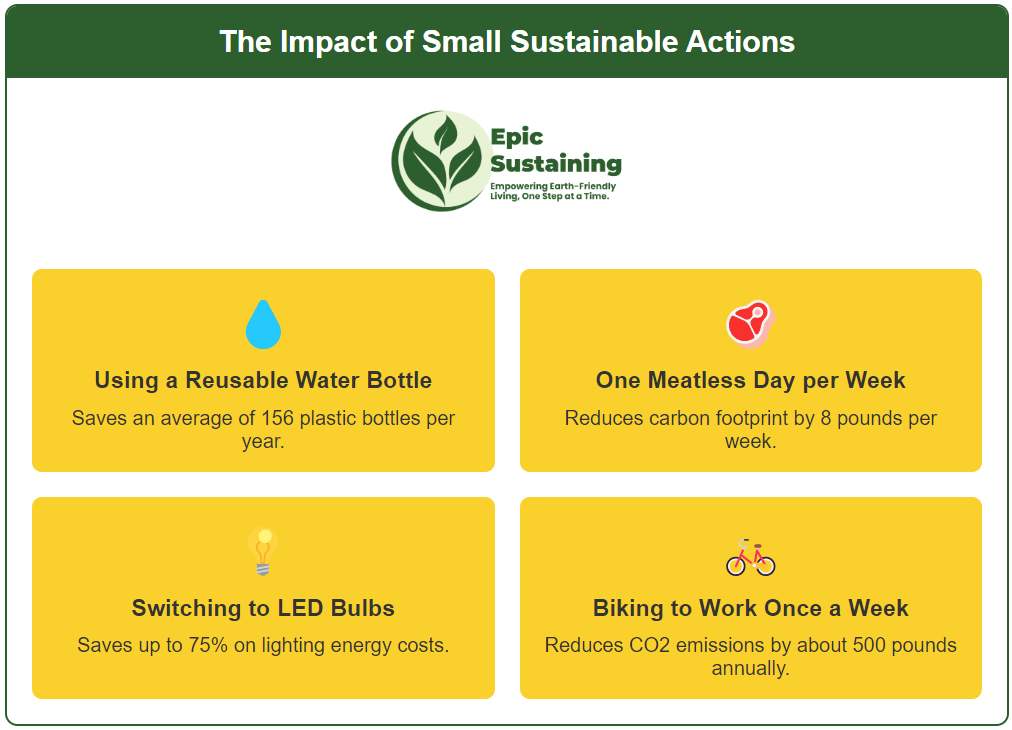
The Myth Explained
A common misconception is that individual actions are insignificant in the face of global environmental challenges.
This belief often leads to a sense of helplessness and inaction.
The Reality
While it’s true that large-scale systemic changes are crucial for addressing global sustainability issues, individual actions do matter and can collectively make a significant impact.
- A study by Wynes and Nicholas (2017) found that individual lifestyle choices can substantially reduce personal carbon footprints.
- The “Social Tipping Dynamics” concept suggests that when 10-30% of the population adopts new social norms, it can trigger rapid societal changes.
Consider these facts:
- If everyone in the U.S. ate no meat or cheese just one day a week, it would be like taking 7.6 million cars off the road.
- A single person switching to reusable bags can eliminate an average of 307 plastic bags per year.
Actionable Tips
- Reduce Single-Use Plastics: Switch to reusable water bottles, shopping bags, and food containers.
- Adopt a Plant-Rich Diet: Incorporate more plant-based meals into your diet to reduce your carbon footprint.
- Conserve Energy: Use energy-efficient appliances and turn off lights and electronics when not in use.
- Choose Sustainable Transportation: Walk, bike, or use public transport when possible.
- Spread Awareness: Share your sustainable practices with friends and family to create a ripple effect.
Remember, your actions not only reduce your personal environmental impact but also influence others and contribute to a cultural shift toward sustainability.
Myth 27: Sustainable Living is Just a Lifestyle Choice
The Myth Explained
Many people view sustainable living as merely a personal preference or trendy lifestyle choice, similar to following a particular diet or fashion style.
The Reality
Sustainable living is far more than just a lifestyle choice, it’s a crucial approach to ensuring the long-term health and survival of our planet and its inhabitants.
The United Nations has declared that “sustainable development is the pathway to the future we want for all. It offers a framework to generate economic growth, achieve social justice, exercise environmental stewardship, and strengthen governance”.
Consider this fact:
- By 2050, if current consumption and production patterns continue, we will need the equivalent of almost three planets to sustain our ways of living.
Actionable Tips
- Vote with Your Wallet: Support businesses and products that prioritize sustainability. Look for certifications like B Corp, which indicates companies meeting high standards of social and environmental performance.
- Advocate for Change: Engage with local and national policymakers to support sustainable policies and initiatives.
- Teach the Next Generation: If you have children or work with young people, instill the importance of sustainable living from an early age.
By recognizing sustainable living as a necessary shift rather than just a lifestyle choice, we can work collectively towards a more resilient and equitable future for all.
People Also Asked
1. Is living sustainably really expensive?
Not necessarily. While some eco-friendly products may have higher upfront costs, many sustainable practices can actually save you money in the long run. For example:
- Using a reusable water bottle instead of buying bottled water can save you an average of $260 per year.
- Energy-efficient appliances might cost more initially, but they can reduce your energy bills significantly over time. ENERGY STAR-certified appliances use 10-50% less energy than standard models.
- Simple habits like reducing food waste can save the average American family $1,500 per year.
2. Is plastic always worse for the environment than other materials?
It’s not always a straightforward answer. While plastic pollution is a serious environmental issue, the overall environmental impact of a material depends on various factors:
- Production energy: Some alternatives to plastic, like glass or metal, may require more energy to produce.
- Transportation: Heavier materials like glass require more fuel to transport, potentially increasing their carbon footprint.
- Reusability and recyclability: Durable plastics that can be reused many times might have a lower overall impact than single-use alternatives.
The key is to prioritize reusable items, regardless of the material, and to properly recycle or dispose of items at the end of their life.
3. What’s the biggest misconception about zero-waste living?
One of the biggest misconceptions about zero-waste living is that it requires achieving absolute zero waste, which is nearly impossible in our current society. In reality, zero-waste is more about:
- Adopting a mindset of reducing waste as much as possible.
- Making conscious choices to minimize unnecessary consumption.
- Focusing on progress, not perfection.
The goal is to send as little waste to landfills as possible, not to produce literally no waste at all.
4. What are the best alternatives to plastic for everyday use?
Some effective alternatives to plastic for everyday items include:
- Glass containers for food storage.
- Stainless steel or bamboo water bottles.
- Beeswax wraps instead of plastic wrap.
- Cotton or hemp produce bags.
- Bamboo toothbrushes.
- Reusable cloth shopping bags.
The best alternative often depends on the specific use case. For example, while glass food containers are great at home, stainless steel might be better for on-the-go to avoid breakage.
5. What happens if we don’t live sustainably?
If we don’t adopt more sustainable practices, we face several potential consequences:
- Climate change: Continued greenhouse gas emissions could lead to more extreme weather events, rising sea levels, and disruptions to agriculture.
- Resource depletion: Overconsumption of natural resources could lead to shortages of crucial materials and energy sources.
- Biodiversity loss: Unsustainable practices contribute to habitat destruction and species extinction, which could disrupt entire ecosystems.
- Economic impacts: The World Economic Forum estimates that $44 trillion of economic value generation is moderately or highly dependent on nature and its services.
Sustainable living isn’t just about protecting the environment, it’s about ensuring a livable world for current and future generations.
